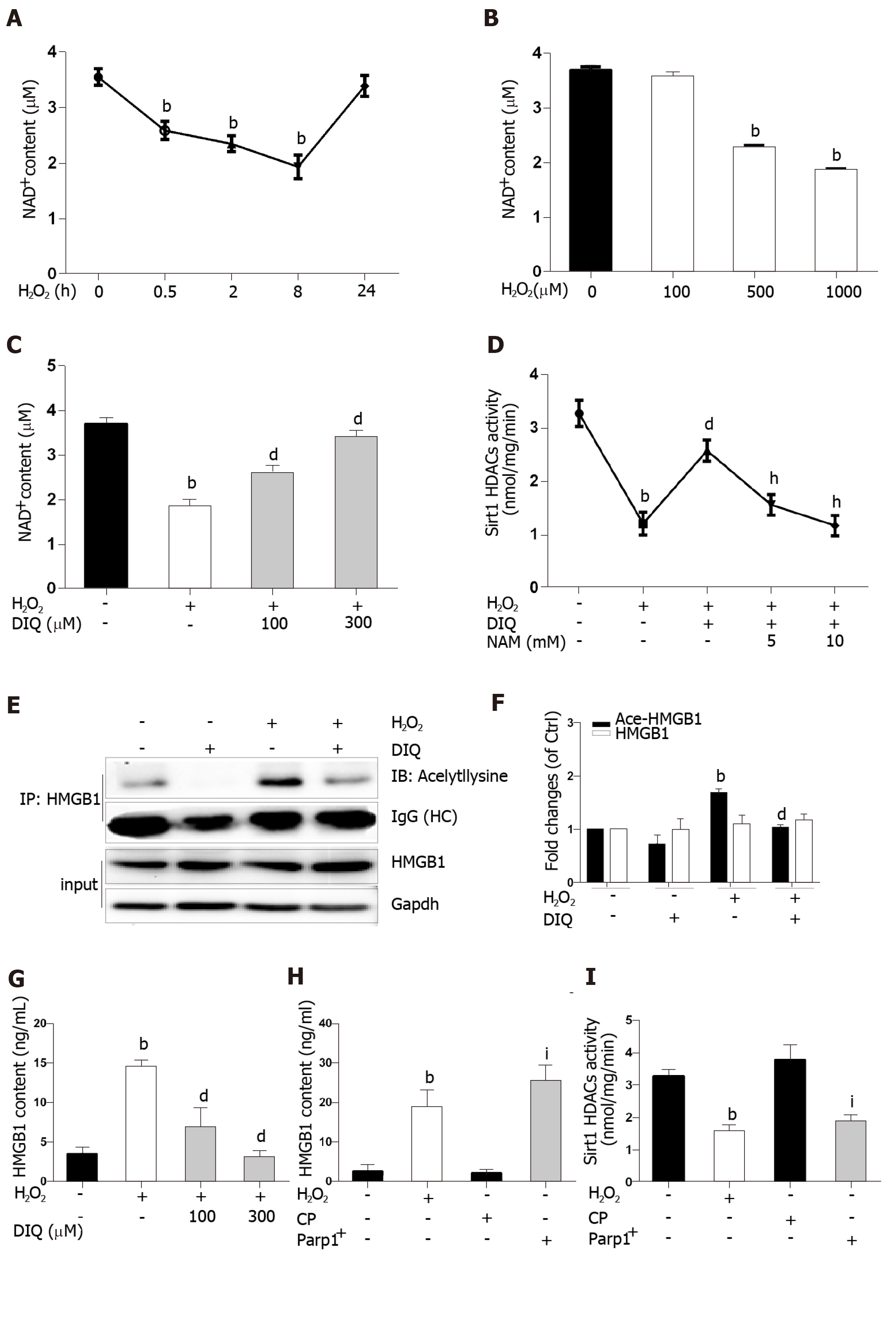Copyright
©The Author(s) 2019.
World J Gastroenterol. Sep 28, 2019; 25(36): 5434-5450
Published online Sep 28, 2019. doi: 10.3748/wjg.v25.i36.5434
Published online Sep 28, 2019. doi: 10.3748/wjg.v25.i36.5434
Figure 6 Sirt1 activity is inhibited by H2O2 through Parp1-NAD+.
A and B: NAD+ contents in cells treated with H2O2 for different durations or at different concentrations; C: NAD+ contents in cells treated with DIQ, a Parp1 inhibitor; D: Sirt1 activity in cells treated with DIQ and NAM, an NAD+ inhibitor; E and F: High mobility group box-1 (HMGB1) acetylation in cells treated with DIQ; G: BNL CL2 cells were treated with DIQ or H2O2. And then HMGB1 contents in medium determined by ELISA; H: HMGB1 contents in medium determined by ELISA in cells treated with CP or Parp1+ transfection; I: Sirt1 activity of cells with Parp1+ transfection. All data are presented as the mean ± SD. Statistical analysis was done by the Student’s t-test. bP < 0.01 vs 0 group or negative control, dP < 0.01 vs H2O2 group, hP < 0.01 vs H2O2 + DIQ group, iP < 0.01 vs CP group. CP: Control Plasmid.
- Citation: Ye TJ, Lu YL, Yan XF, Hu XD, Wang XL. High mobility group box-1 release from H2O2-injured hepatocytes due to sirt1 functional inhibition. World J Gastroenterol 2019; 25(36): 5434-5450
- URL: https://www.wjgnet.com/1007-9327/full/v25/i36/5434.htm
- DOI: https://dx.doi.org/10.3748/wjg.v25.i36.5434









